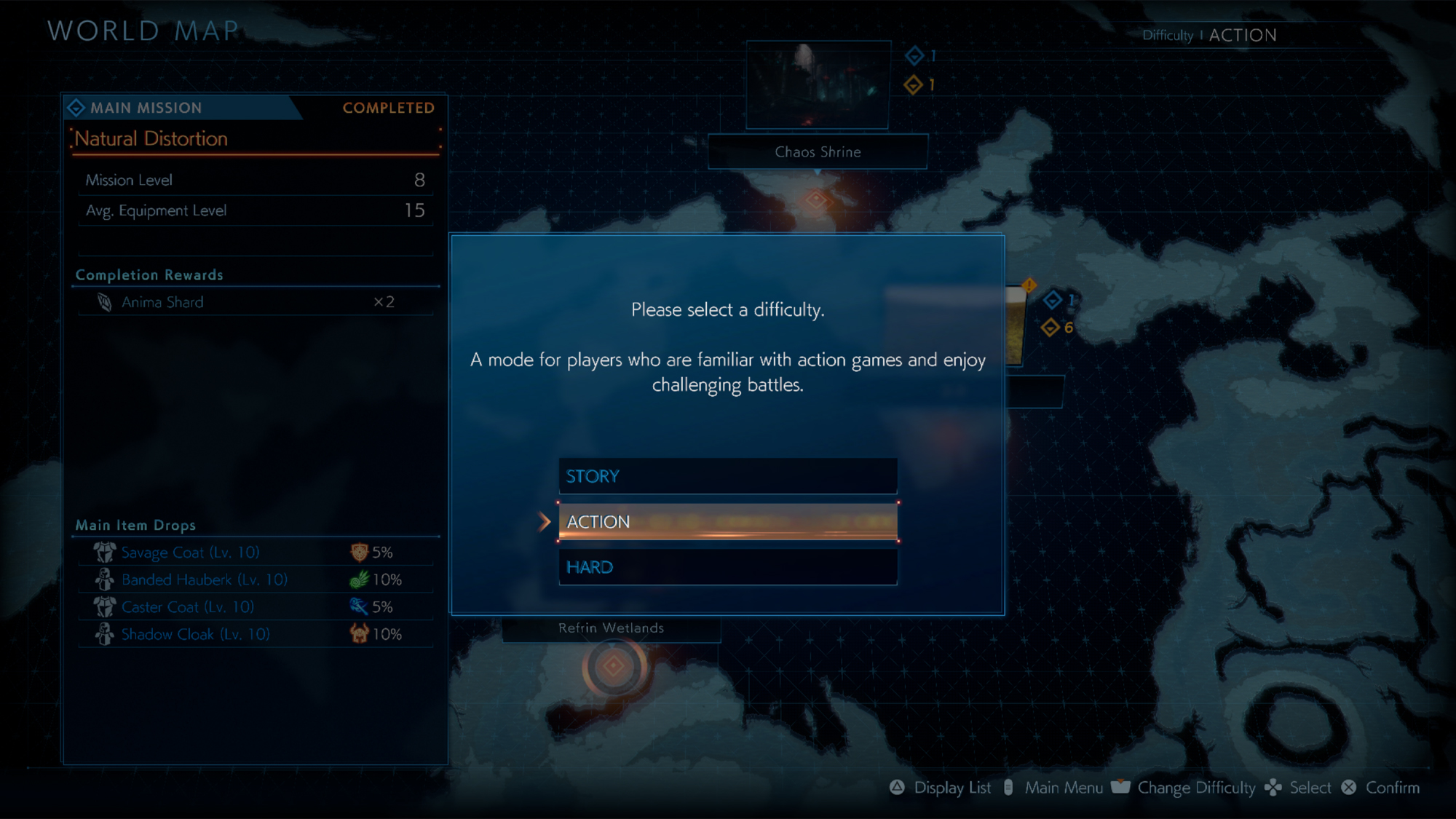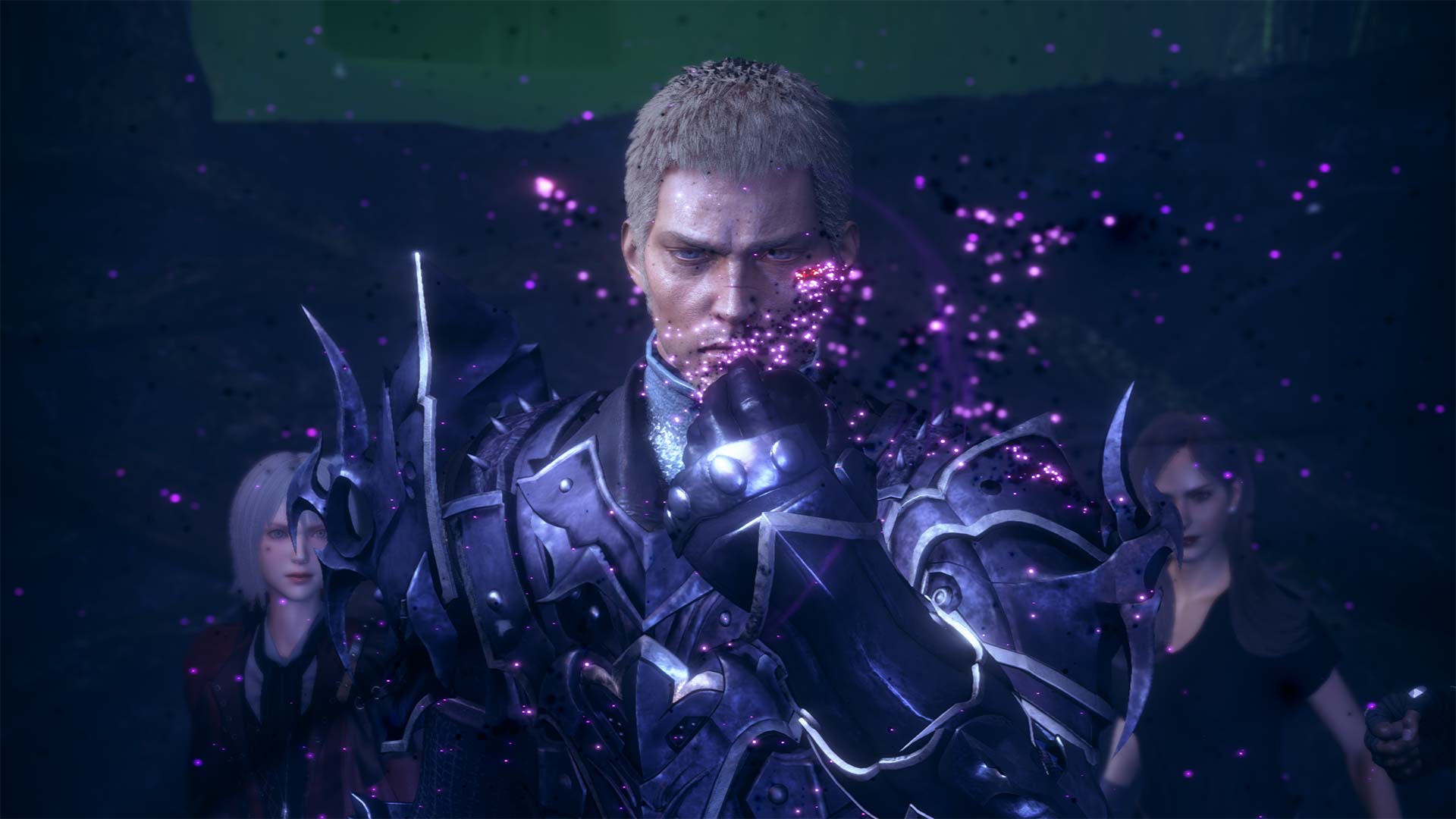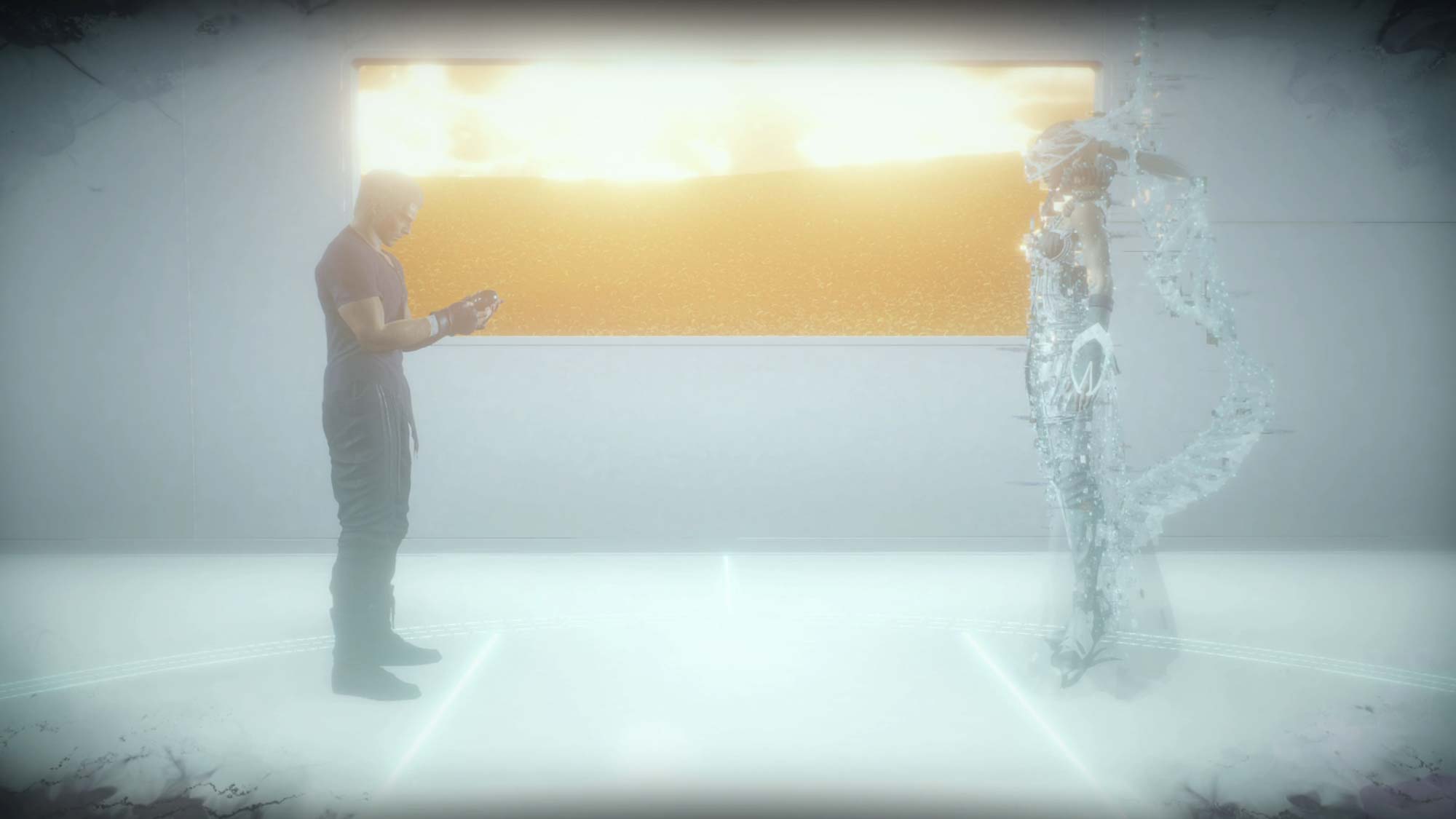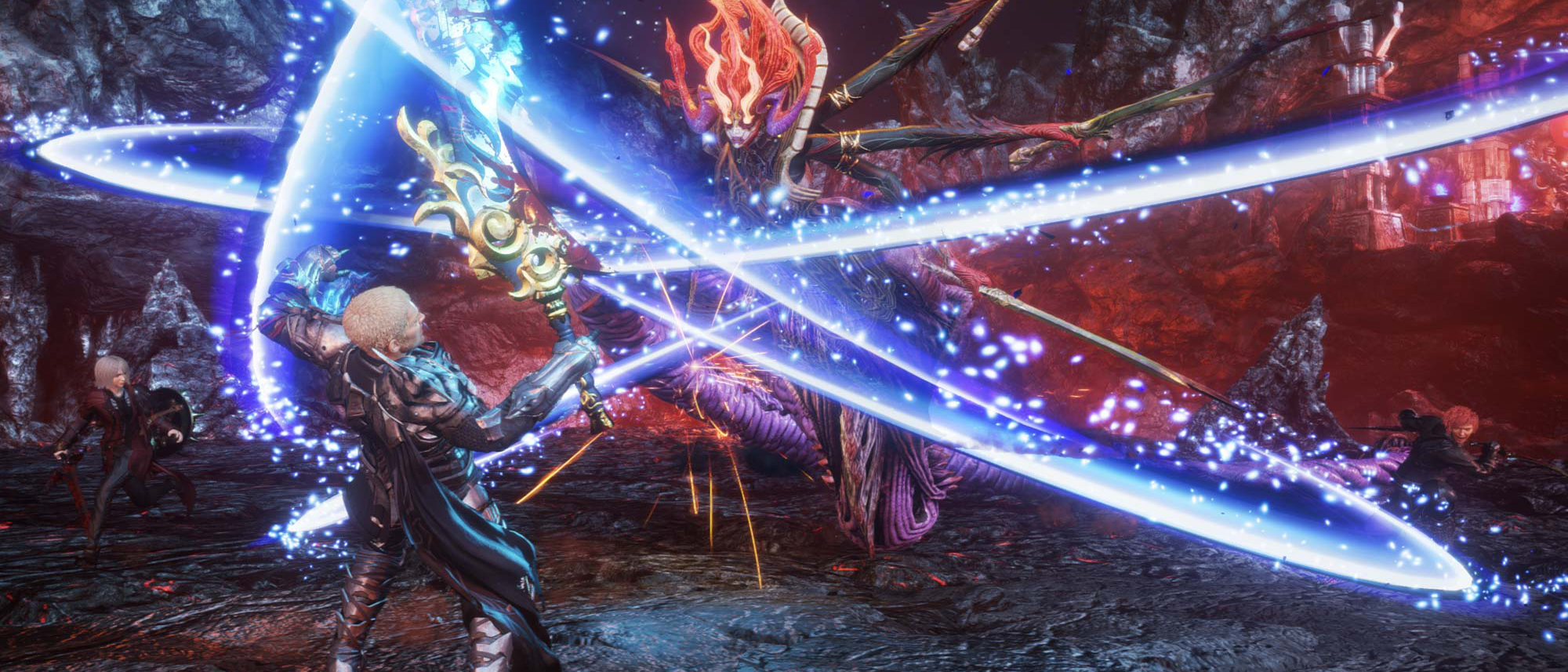Tom's Guide Verdict
Stranger of Paradise: Final Fantasy Origin is an incredibly fun game, filled with bombastic combat, which also expands on the existing lore of the original Final Fantasy.
Pros
- +
Excellent combat and gameplay in general
- +
Big variety of customizable gear
- +
Different difficulty settings make the game approachable
Cons
- -
Story is vague and incomprehensible at first
- -
Undeveloped main cast, apart from Jack
- -
Some repetitive dungeon and enemy designs
Why you can trust Tom's Guide
Platform: PC, PS4, PS5 (reviewed), Xbox One, Xbox Series X|S
Price: $60
Release Date: March 18, 2022
Genre: RPG
Stranger of Paradise: Final Fantasy Origin is a modern interpretation of the original Final Fantasy for the NES. The game follows a man named Jack Garland as he embarks on a mission to destroy Chaos, a malevolent force corrupting the world. Jack, along with two companions, Jed and Ash, learn the prophecy of the Warriors of Light, who are destined to bring down Chaos.
Team Ninja, the studio behind the Nioh and Ninja Gaiden franchises, developed the game. This distinction helps Stranger of Paradise: Final Fantasy Origin stand out amongst its peers by offering fun combat and extensive customization options for its characters. However, the game’s story is a bit confusing at first, and the main characters apart from Jack feel a bit underdeveloped. Read on for our full Stranger of Paradise: Final Fantasy Origin review.
Stranger of Paradise: Final Fantasy Origin review: Gameplay
The combat and dungeon design in Stranger of Paradise: Final Fantasy Origin borrow heavily from the Team Ninja’s Nioh and Ninja Gaiden franchises. The fights take place in real-time, as players explore dungeons and come across monsters from the Final Fantasy universe. The game most closely resembles Nioh in its gear and loot systems. When defeated, enemies drop equipment, such as weapons and armor. Each piece of gear has a level assigned to it, corresponding with the general level of the dungeon.

The gear you equip determines a character’s overall level, based on its combination of stats and levels. For example: If a dungeon’s difficulty level is 20, then enemies will drop equipment around that level. A detail that I love is that every single piece of armor has a unique look, and what you wear in-game is what you'll wear in cutscenes. If Jack is wearing a helmet that covers only the bottom of his face, it’ll show at all times.

In the Nioh series, players were able to switch between different stances to inflict quick, medium and heavy attacks. In Final Fantasy Origin, players can employ the classic Final Fantasy job system instead. Jack can switch between two assigned jobs at any time, each with different abilities. This adds a lot of variety to the gameplay. I had a lot of fun being up close to enemies as a Samurai class, then immediately switching to my Mage class to fire spells from a safe distance.

Enemies also have a Break Gauge. By continuously attacking and applying pressure on enemies, Jack can deplete the gauge and perform a finishing strike on them. It’s reminiscent of Doom Eternal’s glory kill mechanic. If Jack’s gauge breaks, however, he’ll double over and be open to attacks for a few seconds. This mechanic adds a lot of visual flair and impact to the combat.

It's worth pointing out that Final Fantasy Origin is nowhere near as punishing as Nioh. While you can only level up your job abilities at save spots, you don’t lose any of the ability points you’ve earned if you die.
Essentially, Final Fantasy Origin is a much more forgiving and approachable version of Nioh. There are also different difficulty settings: Story, Casual, Normal, Hard and Chaos (which you unlock after beating the game once).

Players who want to sit back, enjoy the story and treat the game like a traditional hack-and-slash RPG, akin to Ninja Gaiden, can choose one of the easier difficulty settings. Those who want an extra challenge with all of the intricate blocking and attacking mechanics can go with the harder difficulties.
Stranger of Paradise: Final Fantasy Origin review: Map and dungeon Design
The overworld in Stranger of Paradise: Final Fantasy Origin feels almost exactly like Nioh’s. It’s just a simple map where you move your cursor over to different dungeons, then select the mission you want to pursue. It isn’t like a traditional RPG, where you have to manually travel from place to place. There are story missions and side missions in each dungeon on the map.
The game's side missions have varying objectives, such as defeating three of a certain kind of enemy, or finding a treasure chest that contains a specific item. During these side missions, the dungeon layout is the same, but players will usually start at a different location than in the story missions.

You can tackle side missions to gain higher-level gear. The gap between a story mission’s recommended level and the player’s gear level seems to widen as the game goes on. This level scaling incentivizes players to play the side missions, lest they get obliterated while trying to face level 100 enemies with level 80 gear.

One issue I came across is that the scenery in dungeons often looks the same. Hallways and corridors start to blend into each other. Sometimes, I even got lost and forgot which way I was supposed to go. This could have been alleviated with some sort of minimap. I would have appreciated something like that, especially given how approachable the rest of the game feels.

Additionally, I thought that the game's enemy variety was a bit lacking. As you get towards the latter half of the game, you start to notice that many enemies look just like palette swaps of each other. Thankfully, Final Fantasy Origin has incredible boss designs. Each one of these distinctive foes looks menacing and powerful.
Stranger of Paradise: Final Fantasy Origin review: Story and characters
Stranger of Paradise: Final Fantasy Origin's plot is pretty vague at the beginning. Jack simply won’t stop talking about how he wants to destroy Chaos. However, the game's connections to the original Final Fantasy become more apparent as you progress through the game.

While the story might seem incomprehensible at first, I urge players to see it through the end, especially if they know how the original Final Fantasy turned out. Throughout the game, you’ll come across orange orbs that provide more lore, and there are some interesting sci-fi elements thrown in as well. It all comes together in the end with a satisfying conclusion.

Outside of Jack, though, the main cast feels somewhat underdeveloped. Jed and Ash also want to destroy Chaos, but we don't learn much about their backstories or their motivations. There’s actually a whole narrative reason for that (which I won’t go into because of spoilers), but as a consequence, it’s hard to care about them throughout the game. The banter between Jack and his allies is genuinely fun to listen to while trekking through dungeons, though.

Jack himself is one of the most unintentionally funny protagonists in the Final Fantasy franchise. He comes off as overly edgy, macho and brooding, but that’s all part of his appeal. His unflinching desire to kill Chaos, screaming curse words all the while, was consistently entertaining.
Stranger of Paradise: Final Fantasy Origin review: Verdict
Despite Stranger of Paradise: Final Fantasy Origin’s flaws, it’s an absolute blast to play. Team Ninja did a great job adapting Nioh’s framework and Ninja Gaiden’s gameplay with Final Fantasy elements to create a unique entry within one of the greatest Japanese RPG franchises of all time. More fleshed-out characters would have been appreciated, but the combat is just so much fun that it’s easy to overlook the blemishes.

